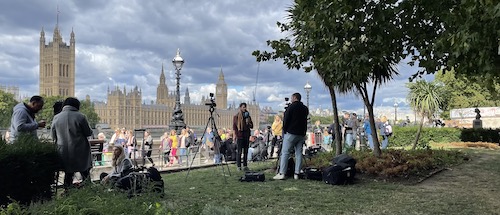Page 5
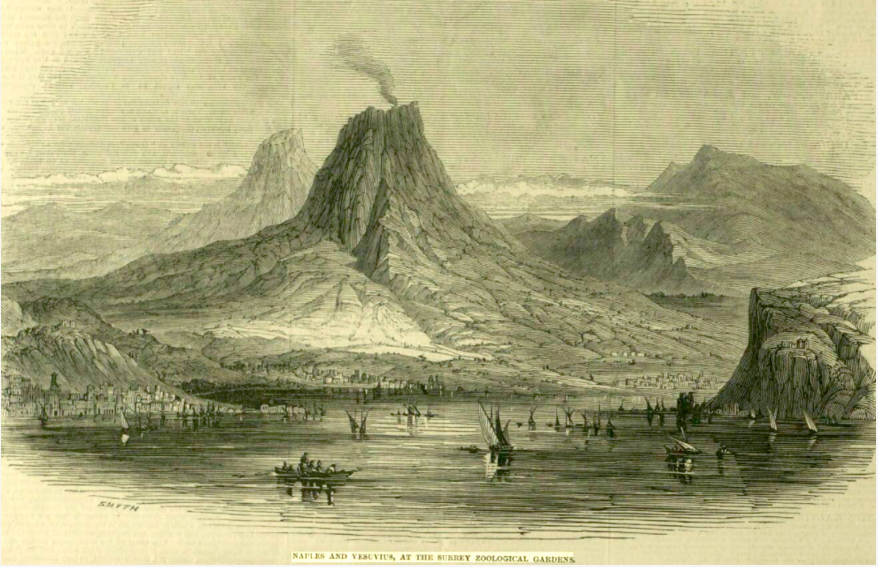
Pasley Park, behind Kennington Tube Station, is all that remains of the Royal Surrey Gardens opened in 1837. These pleasure gardens included the wonderful Surrey Zoological Gardens which exhibited lions, giraffes etc. as well as the above 'largest picture ever painted', installed over a boating lake so that visitors could pretend they were off the Italian coast rather than in central London. Even better, Vesuvius would, at dusk, appear to erupt with smoke, fire and 'subterranean thunder'!
The zoo was the main rival to London Zoo in Regent's Park but they were very different establishments. London Zoo aimed to attract educated society seeking knowledge and enlightenment. Surrey Zoo offered an imperial display and commercial entertainment. London newspapers excitedly reported its acquisitions, even naming the ship bringing them, and its captain. Excited members of the public then waited at the dock hoping to catch a glimpse of a tail, or a flash of teeth and claws.
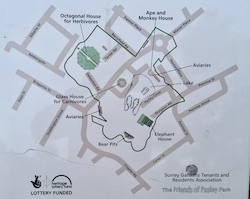 The Gardens accordingly served as a playground for the whole of London, sometimes drawing up to 8,000 visitors a day. But they eventually lost out to competition from other zoos and pleasure gardens as well as from the Great Exhibition at Crystal Palace. The huge 12,000 seater Surrey Music Hall was built on part of the land in 1856, only to be destroyed by fire in 1861, leading to a High Court legal case to recover the costs of printing posters for an event that could not be held at the hall as a result of its destruction. The case established the doctrine of impossibility in English contract law.
The Gardens accordingly served as a playground for the whole of London, sometimes drawing up to 8,000 visitors a day. But they eventually lost out to competition from other zoos and pleasure gardens as well as from the Great Exhibition at Crystal Palace. The huge 12,000 seater Surrey Music Hall was built on part of the land in 1856, only to be destroyed by fire in 1861, leading to a High Court legal case to recover the costs of printing posters for an event that could not be held at the hall as a result of its destruction. The case established the doctrine of impossibility in English contract law.
Click on the image to the right to pull up a larger image.
Vauxhall Park ..
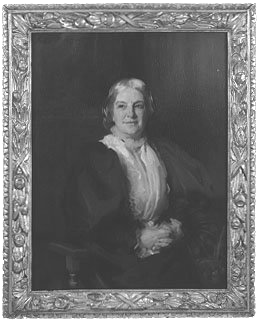 ... was opened on 7 July1890, thanks in part to the efforts of Octavia Hill (left), who went on to co-found the National Trust. She intended that it would "... form one of those all too few central gardens to which the very young and the very old, the over-worked in brief intervals of work, the convalescent, and the quite poor may find near to their own houses the rest, the air, the outside peace they so often need."
... was opened on 7 July1890, thanks in part to the efforts of Octavia Hill (left), who went on to co-found the National Trust. She intended that it would "... form one of those all too few central gardens to which the very young and the very old, the over-worked in brief intervals of work, the convalescent, and the quite poor may find near to their own houses the rest, the air, the outside peace they so often need."
But the park also owes its existence to the 1867 marriage of 19-year old Millicent Garrett to 33-year-old Henry Fawcett who, despite being blind, was both professor of political economy at the University of Cambridge and Liberal MP for Brighton. In 1880, he was appointed Postmaster-General. He had a particular interest in encouraging saving through the Post Office Savings Bank. He introduced the savings stamp which allowed people to save pennies at a time to build up the minimum account limit of a shilling. He pushed through parliament an act to allow savers to convert their post office savings to government stock and he developed the post office's life insurance and annuities schemes. He introduced many other innovations, including parcel post, postal orders, and licensing changes to permit payphones and trunk lines.
For some years the couple were based in Cambridge, where their only child Philippa was born in 1868, but from 1875 rented a London house, 51 South Lambeth Road, on what was known as the ‘Lawn estate’. Their double-fronted house, one of eight, probably dated from the early years of the 19th century and was set far back from the South Lambeth Road, behind the lawn for which it was named. Each house in the terrace had behind it a long, wide garden of about three-quarters of an acre.
The house was convenient for the House of Commons and Henry was pleased that within a short walk from Vauxhall Station ‘he was able to hear real birds, and the sound of wind among real leaves’. However, by the mid-1880s ‘The Lawn’ and the neighbouring ‘Carroun House’ estate had been sold to a developer, who planned to replace them with speculative housing.
In 1884 Henry Fawcett died suddenly, aged 51, whereupon Octavia Hill’s Kyrle Society, whose mission was ‘to bring beauty home to the people’, launched a campaign to save the area as a ‘Pleasure Ground’ in Henry’s memory. Millicent, who was by now a well-known speaker and writer on the rights of women, led the campaign, with the backing of Henry Doulton, whose pottery works stood close by. Henry had previously worked with him on preserving open spaces.
Eventually £17,500 was raised to buy the freehold of the eight-acre site, the houses were demolished, and the area laid out by the Kyrle Society’s landscape gardener, Fanny Rollo Wilkinson. The grand opening, below, was by Albert, Prince of Wales.
Coincidentally, Fanny was not only the first woman in Britain to become a professionally trained landscape gardener but had for some years been a close friend of Millicent Fawcett. The two women worked together on a projects to improve the position of women and became both neighbours and eventually sisters-in-law.
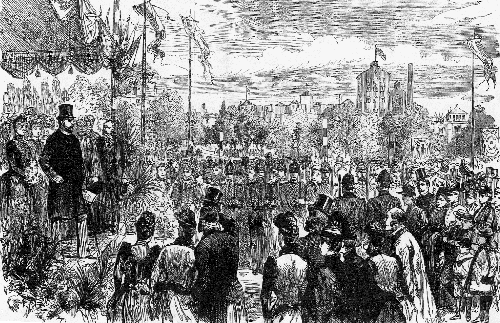
Here is the modern park being put to good use by a local school.
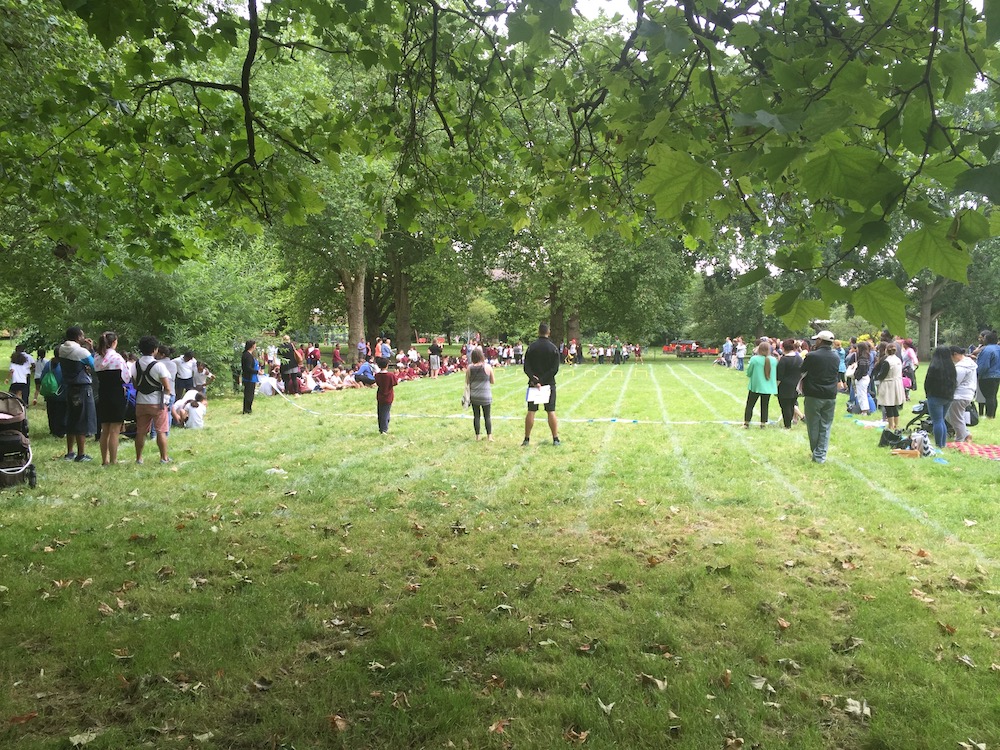
Follow this link to find a fascinating guided tour of the park, including a most interesting section about the model village and its twins, including a very well preserved one in Melbourne, Australia.
Fentiman Road runs down the side of Vauxhall Park. Here is a photo taken in the early 1900s before there was any need for a Low Traffic Neighbourhood. The spire on the church has since disappeared, most likely as a result of WW2 bomb damage.
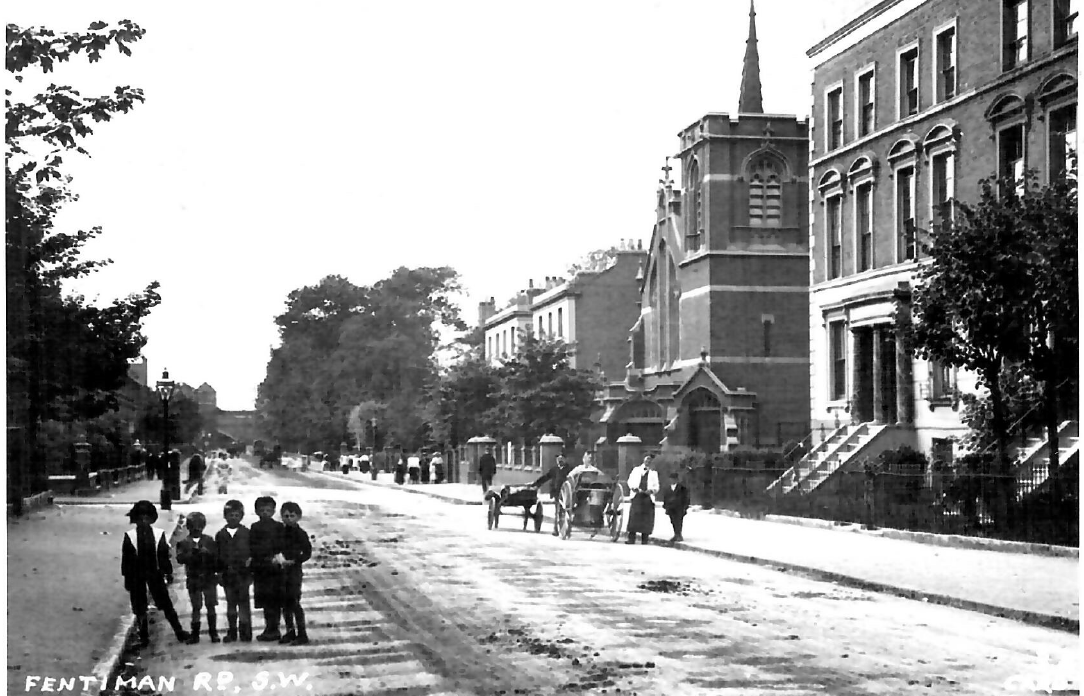
The Slades were another prominent local family who founded the Slade School of Art and endowed several professorships in fine art. The first Slade Professor in Oxford was John Ruskin.
Here is information about Slade Gardens and the Slade Fountain in Kennington Park.
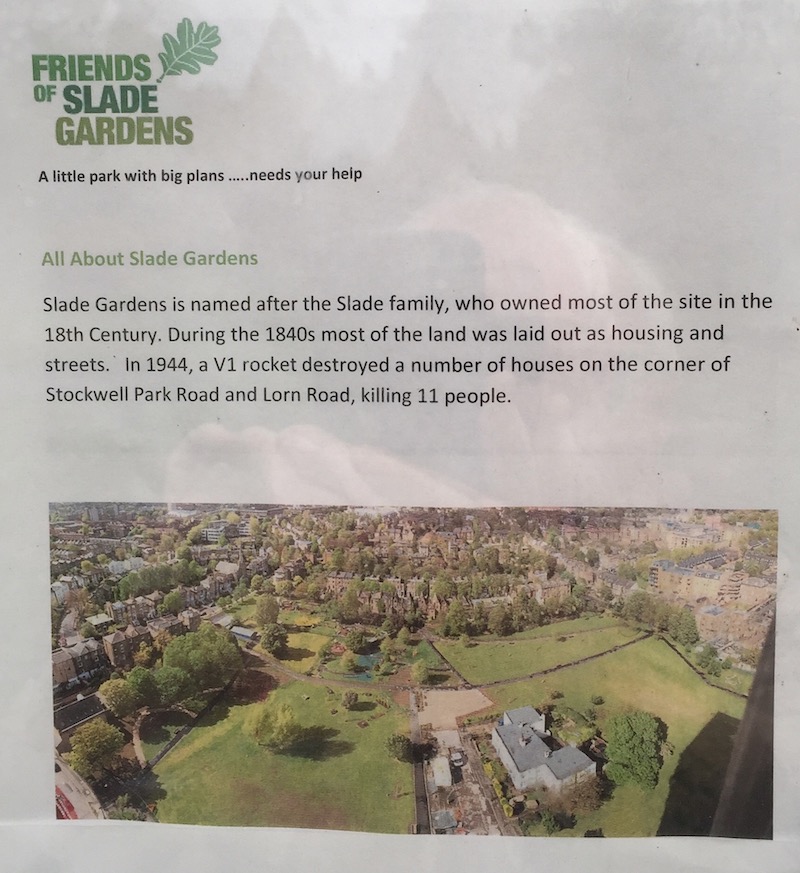
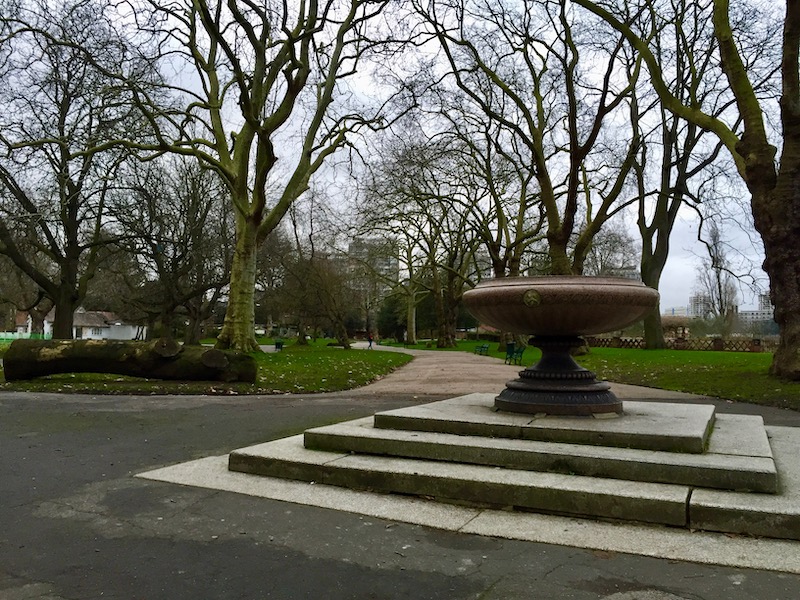
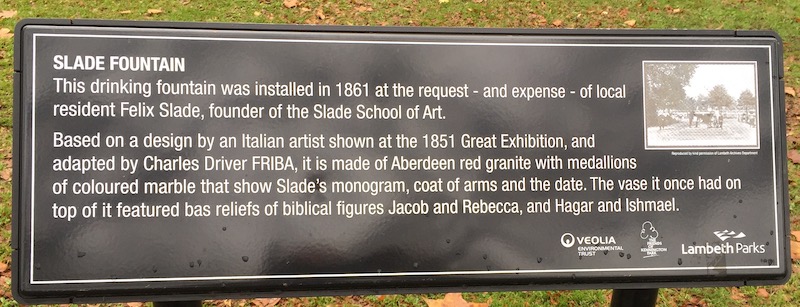
The Oval ...
... was originally a cabbage garden and was opened as a cricket ground in 1846. It was also the place where the first FA Cup Final was played in 1872 - in front of a 2000 strong crowd. There is a more detailed history here.
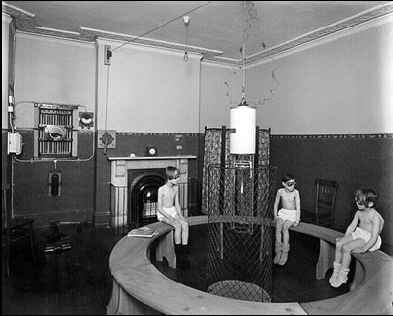 Many prominent local residents are buried in West Norwood Cemetery, about 4 miles south of Kennington but well worth a visit, especially on one of the open days. Originally laid out in 1836 as the South Metropolitan Cemetery. This was the second of the 8 large cemeteries established around London during that period. It is on a beautiful hillside site and contains some very impressive monuments. The Friends of the cemetery have established their own web site.
Many prominent local residents are buried in West Norwood Cemetery, about 4 miles south of Kennington but well worth a visit, especially on one of the open days. Originally laid out in 1836 as the South Metropolitan Cemetery. This was the second of the 8 large cemeteries established around London during that period. It is on a beautiful hillside site and contains some very impressive monuments. The Friends of the cemetery have established their own web site.
Henry Percy Adams and Charles Holden designed the Belgrave Hospital for Children, Clapham Road in phases between 1899 and 1926. It replaced the original Belgrave hospital in Belgravia/Pimlico. The hospital is built on a quasi-cruciform plan, with separate ward wings linked by connecting corridors and bridges, thus ensuring the isolation of any wing during an outbreak of infectious disease. This image shows patients in the Artificial Sunlight Treatment Room. Artificial sunlight was used for the promotion and maintenance of good health. The patients are wearing goggles to protect their eyes from the ultra violet light.
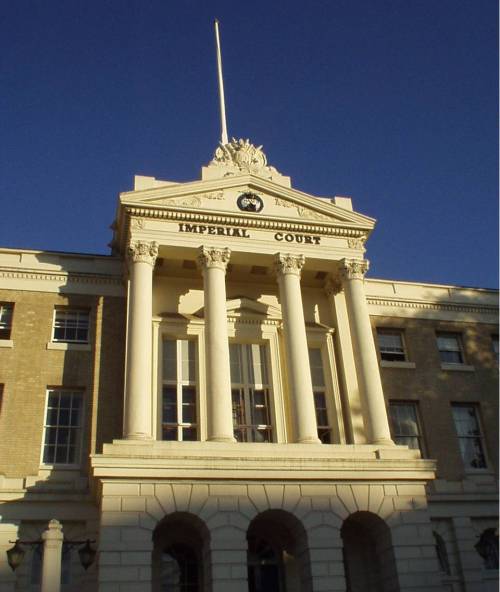 The photo on the right is of Imperial Court, on Kennington Lane near Kennington Cross - one of the most prominent buildings in Kennington. It was built in 1836 to house the Licensed Victuallers School and from 1921 to 1992 it was the headquarters of the NAAFI (The Navy, Army and Air Forces Institute). Along with the armed services themselves, NAAFI had to grow quickly at the start of World War II. At its largest there were 10,000 outlets including 800 ships' canteens and 900 mobile shops. Imperial Court is now an apartment block, but the NAAFI badge can still be seen at the top of the building.
The photo on the right is of Imperial Court, on Kennington Lane near Kennington Cross - one of the most prominent buildings in Kennington. It was built in 1836 to house the Licensed Victuallers School and from 1921 to 1992 it was the headquarters of the NAAFI (The Navy, Army and Air Forces Institute). Along with the armed services themselves, NAAFI had to grow quickly at the start of World War II. At its largest there were 10,000 outlets including 800 ships' canteens and 900 mobile shops. Imperial Court is now an apartment block, but the NAAFI badge can still be seen at the top of the building.
Below are two photos of another beautiful building, also near Kennington Cross, just up Kennington Road towards the park. It was built in 1852 and was Lambeth's Vestry Hall (i.e. town hall) and was then the headquarters of the Church of England's Society for Waifs and Strays - later the Childrens Society. The older photo below shows the society's children awaiting a 1935 visit by King George V. (Note the tram tracks.)
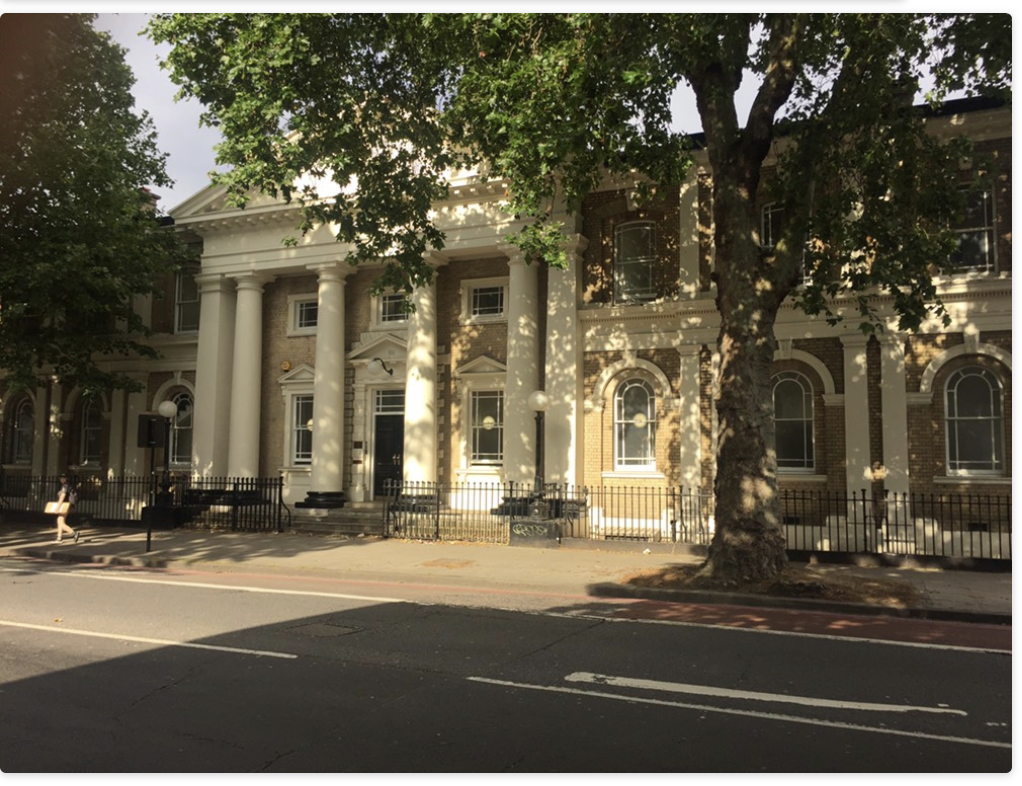
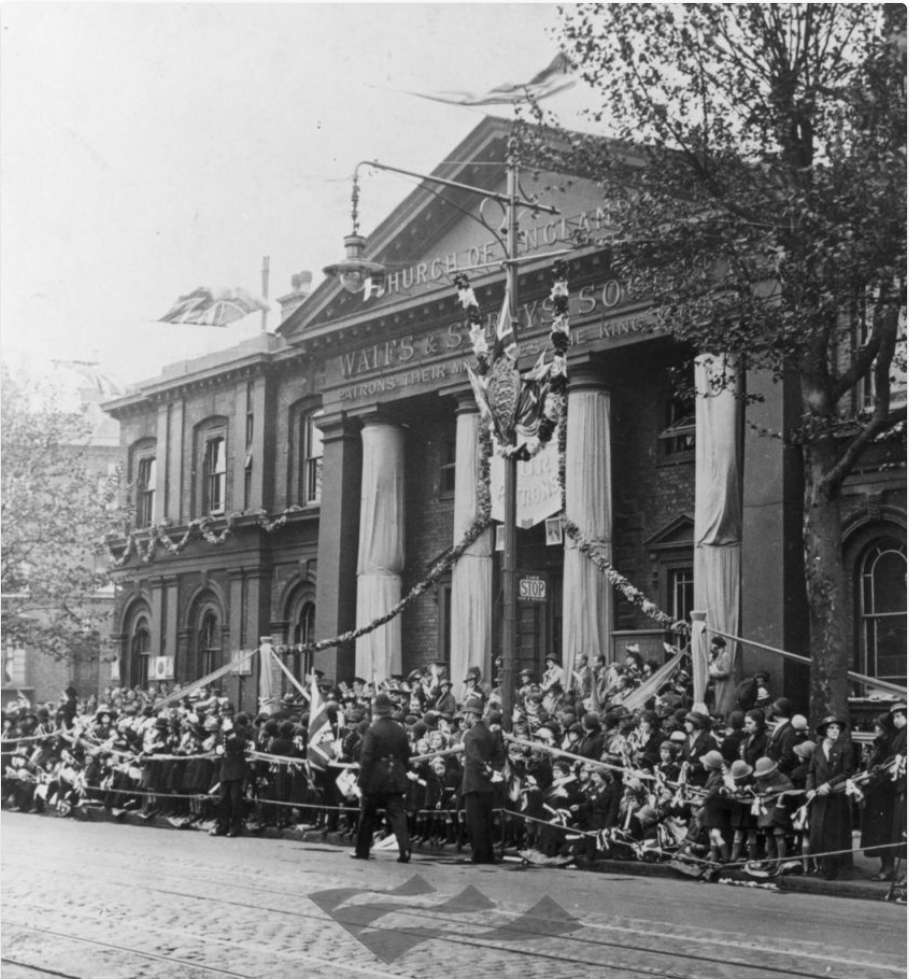
Follow this link to read an interesting history of London Vestries and Boroughs.
A Vauxhall resident died on The Titanic after it hit an iceberg in April 1912. 32 year old bandsman Percy Cornelius Taylor had been a lodger at the home of Mr Vannozzi at 9 Fentiman Road. He was a pianist and cellist and presumably went to his death as the band played the hymn Nearer, My God, To Thee.
The above photo was taken during the unveiling of the Stockwell war memorial in May 1922. Please click on the image if you want to see the much larger original.
The large building at 139 Clapham Road has an interesting history. The site was originally (from 1878) occupied by The Marble Rink - an 1800 foot (c.500 metres) roller skating rink and athletics space. It was then occupied by the Marble Laundry run by Mrs Meredith's Discharged Female Prisoners Aid Society.
Mrs Meredith worked closely with the young Dr Annie McCall who was one of the first women to qualify as a doctor and who went on to have an incalculable influence on the health outcomes of pregnant mothers in south London and on obstetrics practice worldwide. Dr McCall later moved the outpatients department from the laundry site to her own home a few doors away at 131 Clapham Road. It subsequently moved to Fentiman Road (exact location unknown) and then to McCall’s new address at 161 Clapham Road, and eventually to Jeffreys Road, the location of the Clapham (and later 'the Annie McCall') Maternity Hospital.
Caustons - one of the UK's largest printing firms - subsequently built the huge print works that still stands today. When they moved their operations to Hampshire in 1937 the building was acquired by Freemans Catalogue Co. Freemans eventually relocated to Yorkshire and the site was redeveloped as housing and business units.
The Freemans building was bombed during the Second World War, killing 23 young women. Indeed, the whole Vauxhall/Kennington area suffered serious bombing during that war mainly because it is near important railways and bridges over the Thames. It also got caught up in the 2005 London suicide bombing campaign.
One result of the bomb damage was much slum clearance and the creation of a large number of post-war high-rise "Council Estates":- local authority-built social housing. Many survive in good shape to this day, but some have deteriorated very badly, including the Aylesbury Estate to the east of the Walworth Road.
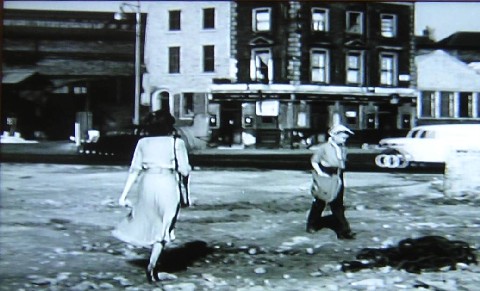
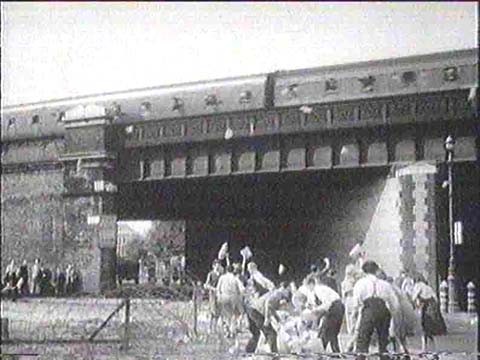
Another result was that post-war film-makers could shoot the comedy Passport to Pimlico at the bombsite at the corner of Lambeth Road and Hercules Road - see left-hand photo above. The story involves a group of local residents finding that they are in truth Burgundians, declaring independence, being besieged by the government, and being sustained by food thrown to them by friends and neighbours, including those passing along the nearby [Waterloo to Vauxhall] railway line - see the right hand photo above.
Here are two more photos taken whilst the movie was being shot. The pub in the second photo was called the Union Flag. It is now the corner cafe at the junction of Lambeth Road and Hercules Road.
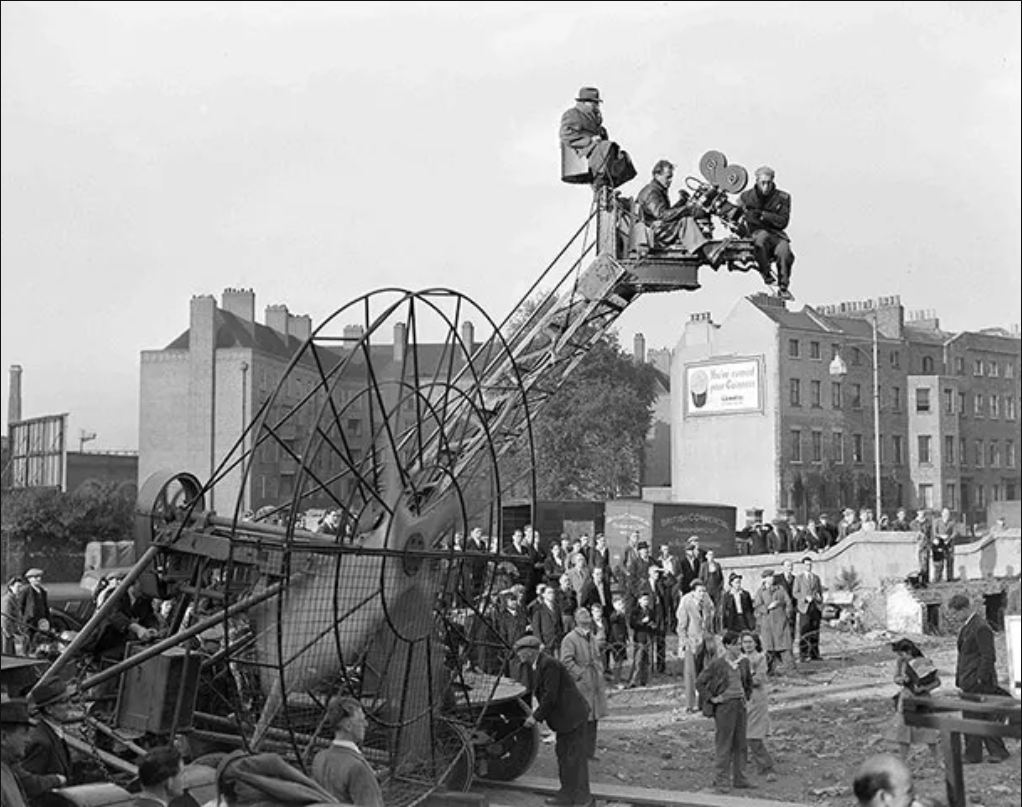
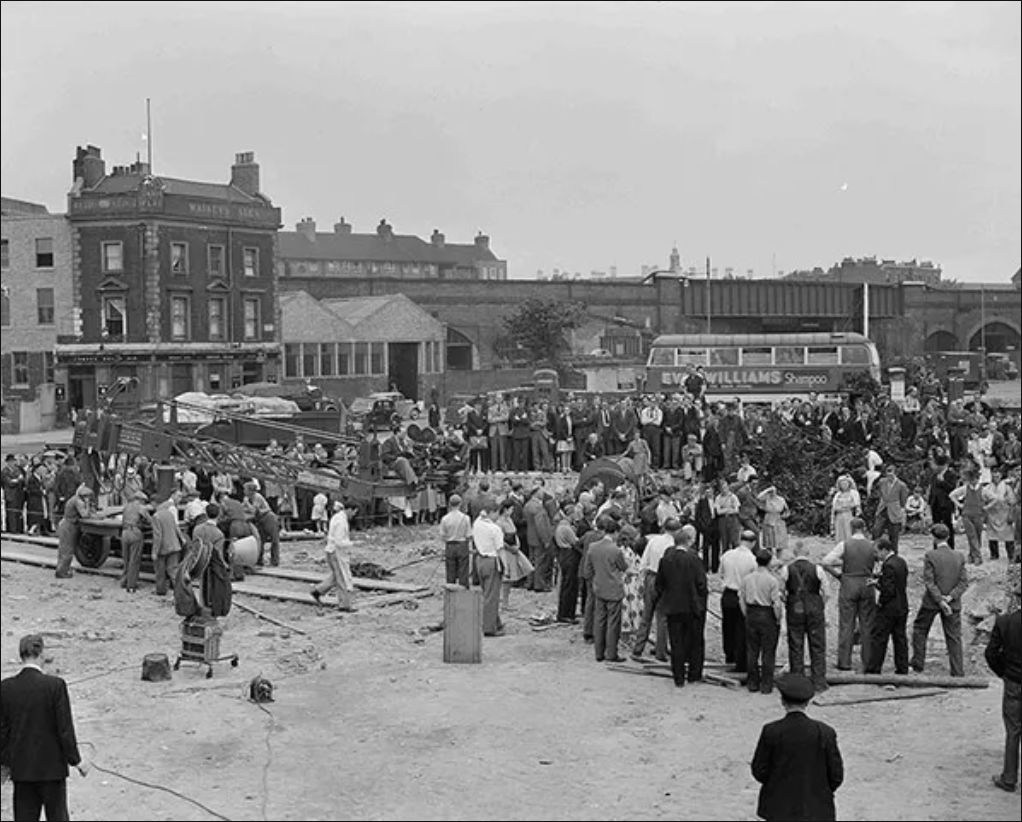
The London Terminal Coach Station
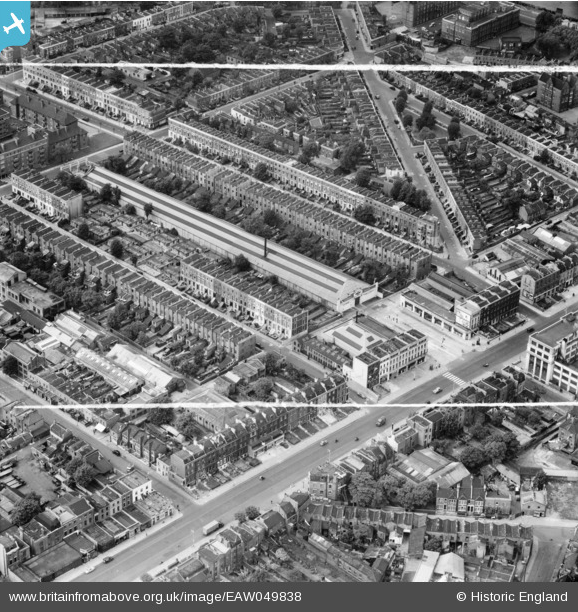
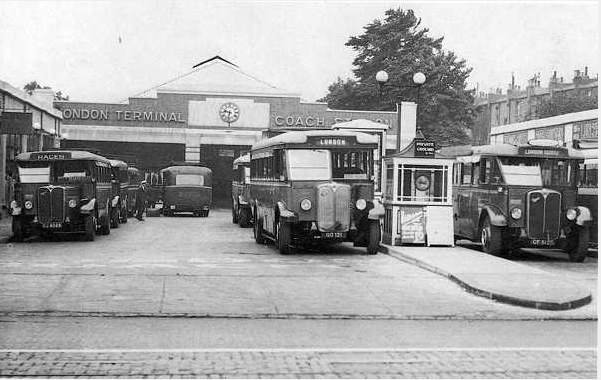
The first photo above shows the site of the London Terminal Coach Station as it was in 1953 behind bomb damaged Richborne Terrace. The coach station was originally opened by Blue Belle Motors in 1929, replacing a private garden known as 'The Shrubbery'. The offices etc. on the Clapham Road were destroyed by bombing during World War 2 and were replaced by Keith & Boyle's Vauxhall car dealership (which can clearly be seen in the photo) and then a car hire facility. The long thin garage area eventually became Usborne Mews. The second photo (above right) shows the coach station around 1931.
Some further photos, showing larger areas around the coach station, may be found here.
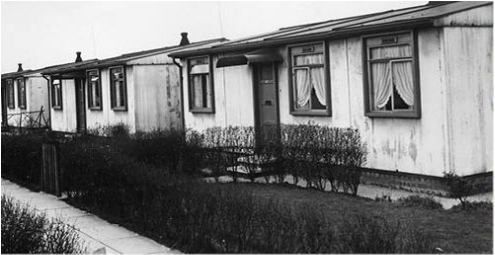 Another interesting feature in this photo are the 'prefabs' (small pre-fabricated houses) built hurriedly after the war to replace the long stretch of Richborne Terrace that was destroyed by a large bomb. The prefabs were in due course replaced by the maisonettes at Nos. 34-60 Richborne Terrace. The photo opposite is of some other, fairly typical post war prefabs before they were eventually demolished.
Another interesting feature in this photo are the 'prefabs' (small pre-fabricated houses) built hurriedly after the war to replace the long stretch of Richborne Terrace that was destroyed by a large bomb. The prefabs were in due course replaced by the maisonettes at Nos. 34-60 Richborne Terrace. The photo opposite is of some other, fairly typical post war prefabs before they were eventually demolished.
And the blitz inspired some amazing public art in Vauxhall.
Bugatti and ...
The General Motor Cab Company
The extensive Kennington Park Business Centre at the bottom of Brixton Road originally housed Bugatti's London dealership. Bugatti was the pre-war creator of the glamorous, extravagant Royale, a behemoth built for Kings - although in the end none came forward with enough money to buy it - and of the type 35 Grand Prix car which even now, more than a century after the first one took to the roads, is arguably with the most successful racing car in history.
The building then became the home of 2,000 black cabs owned by the above-named company. Here is a 1924 photo:
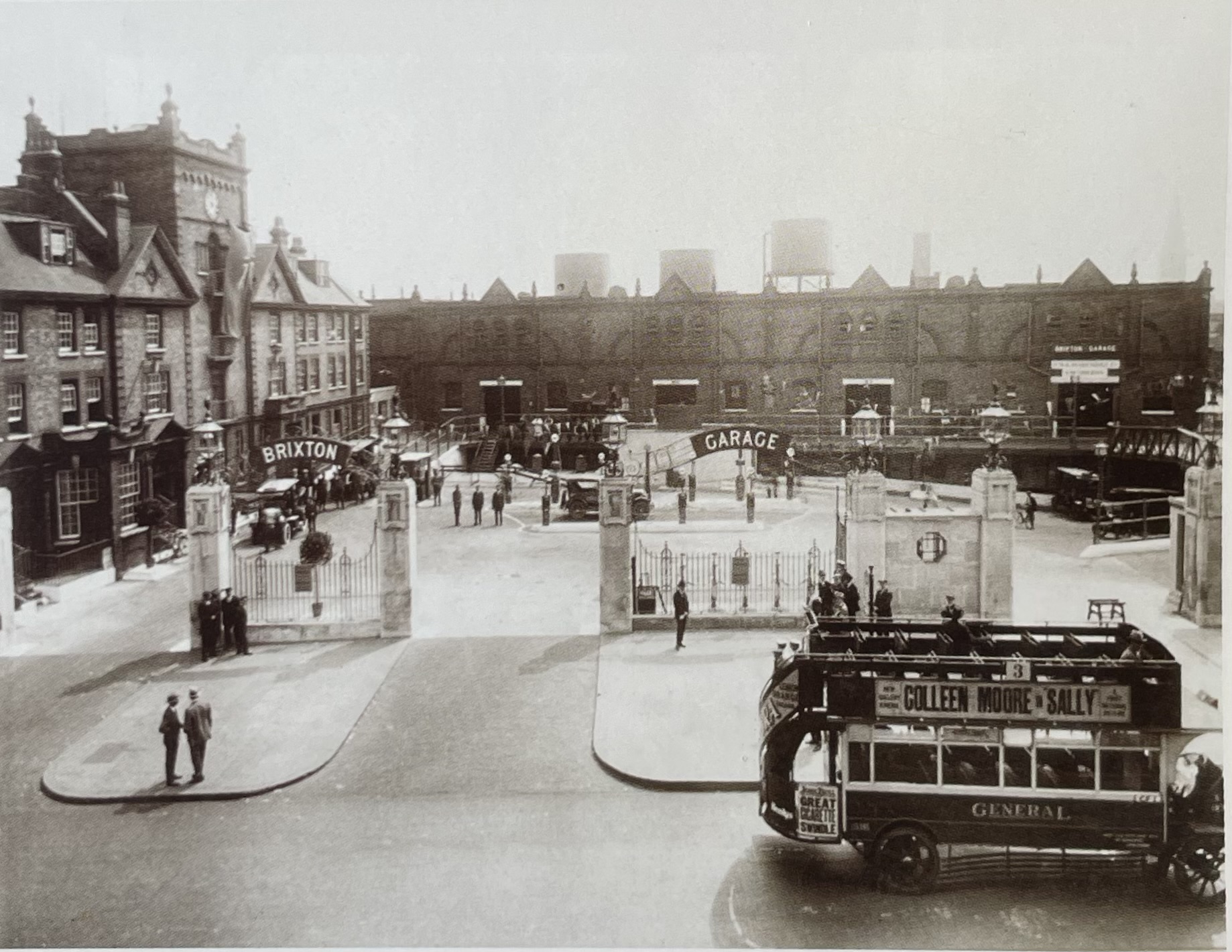
Post War ...
Claudia Jones lived at 6 Meadow Road in the late 1950s. Claudia founded the West Indian Gazette and came up with the idea of bringing Caribbean carnival to London. The first carnival took place St Pancras Town Hall on 30 January 1959, and later evolved into an outdoor event, the Notting Hill Carnival. Claudia was born (Claudia Cumberbatch) in Trinidad and Tobago and migrated to the USA with her family. She became a Communist political activist, feminist and black activist, adopting the name Jones as "self-protective disinformation". She was imprisoned and then deported because of her politics. Trinidad and Tobago's (UK appointed) Governor refused to let her return but she was offered residency in the UK on humanitarian grounds.
Sainsbury's Nine Elms was the first Sainsbury's supermarket to be built in London. It was opened by Prime Minister Margaret Thatcher in February 1982. It was demolished as part of the Vauxhall Nine Elms Development project and a new store opened on broadly the same site in 2016
Planes are today again prominent over Vauxhall, which is about 24km (15 miles) from Heathrow, on the approach flight path. Planes therefore pass over at about 1200 metres (4000 feet). Heathrow has a total of 1300 movements a day - i.e. 650 landings, but only about one third of them, on average, pass over Vauxhall. In good weather, and at peak times, there are only 50 seconds between each plane. The first arrivals in the morning can be as early as around 0430 (from the Far East) and the latest in the evening can be as late as 2300 (from Europe). But both times vary with the incidence of Summer Time, and the winds en route.
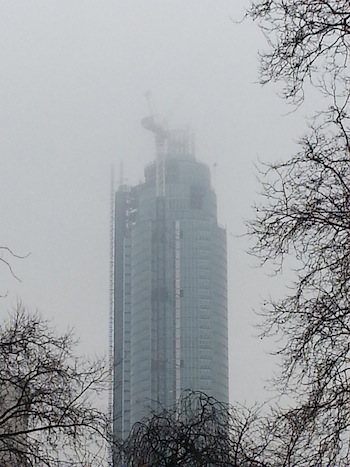 Helicopters, too, can frequently be heard flying along the river to Battersea Heliport. Tragically, one of them hit the jib of a crane being used to construct St George - Vauxhall Tower during the rush hour one morning in January 2013. The top of the crane and the top of the building were obscured by cloud at the time; see photo on right taken a few weeks later. The aircraft hit the jib of the crane only 11m below its 219m high tip, well above the top of the 185m high tower. The pilot and a pedestrian were killed when the aircraft crashed in the Wandsworth Road - see photos below - but it could have been much much worse ...
Helicopters, too, can frequently be heard flying along the river to Battersea Heliport. Tragically, one of them hit the jib of a crane being used to construct St George - Vauxhall Tower during the rush hour one morning in January 2013. The top of the crane and the top of the building were obscured by cloud at the time; see photo on right taken a few weeks later. The aircraft hit the jib of the crane only 11m below its 219m high tip, well above the top of the 185m high tower. The pilot and a pedestrian were killed when the aircraft crashed in the Wandsworth Road - see photos below - but it could have been much much worse ...
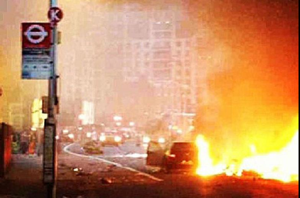
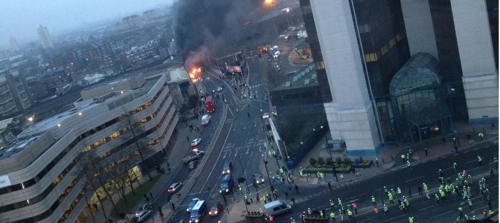
The 2010s saw an enormous amount of high rise and other development around Vauxhall and Nine Elms. Click here to read more about this transformation and to see some interesting old and new images.
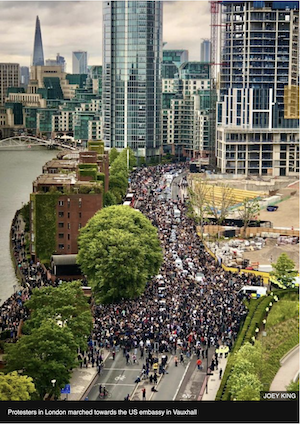 President Trump refused, in early 2018, to visit Nine Elms to open the new US Embassy. He claimed that this was because he disapproved of the decision to sell the lease on the embassy in Grosvenor Square and build the new mission in an "off location". He thought the decision had been taken by his predecessor President Obama, but in fact the decision had been taken on expert advice by President George W Bush.
President Trump refused, in early 2018, to visit Nine Elms to open the new US Embassy. He claimed that this was because he disapproved of the decision to sell the lease on the embassy in Grosvenor Square and build the new mission in an "off location". He thought the decision had been taken by his predecessor President Obama, but in fact the decision had been taken on expert advice by President George W Bush.
The embassy was in 2020 the destination of a large Black Lives Matter protest march following the killing of George Floyd in Minneapolis. (Click on the photo on the right to bring up a larger image.)
Lambeth Bridge and the nearby Embankment saw another huge queue in September 2022 during the lying in state of the late Queen Elizabeth II.
Vauxhall could be seen in the distance beyond this 2024 New Year's Day drone display:
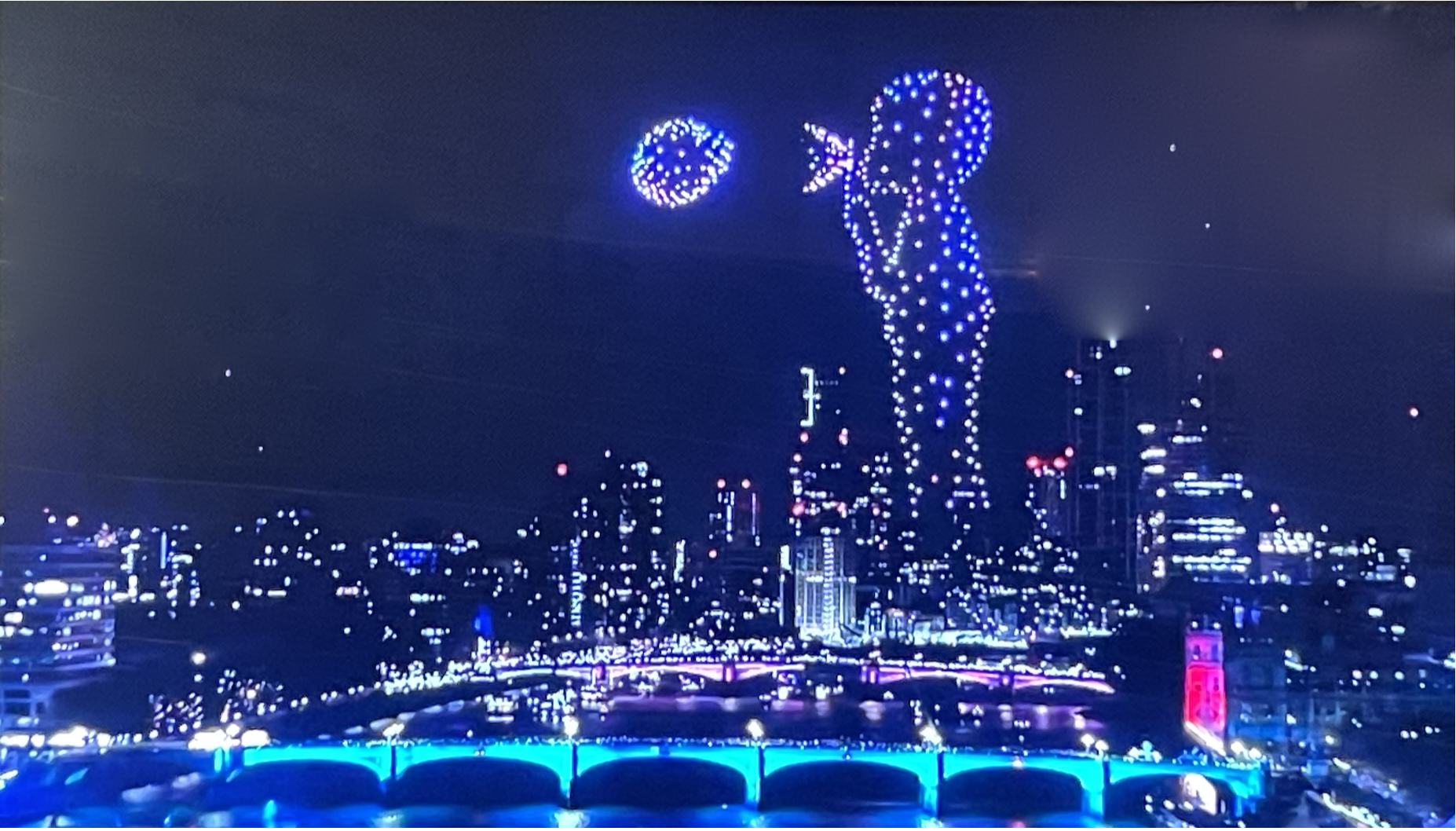
And another large (this time pro-Palestine) demonstration passed through Vauxhall on the way to the US Embassy in March 2024.
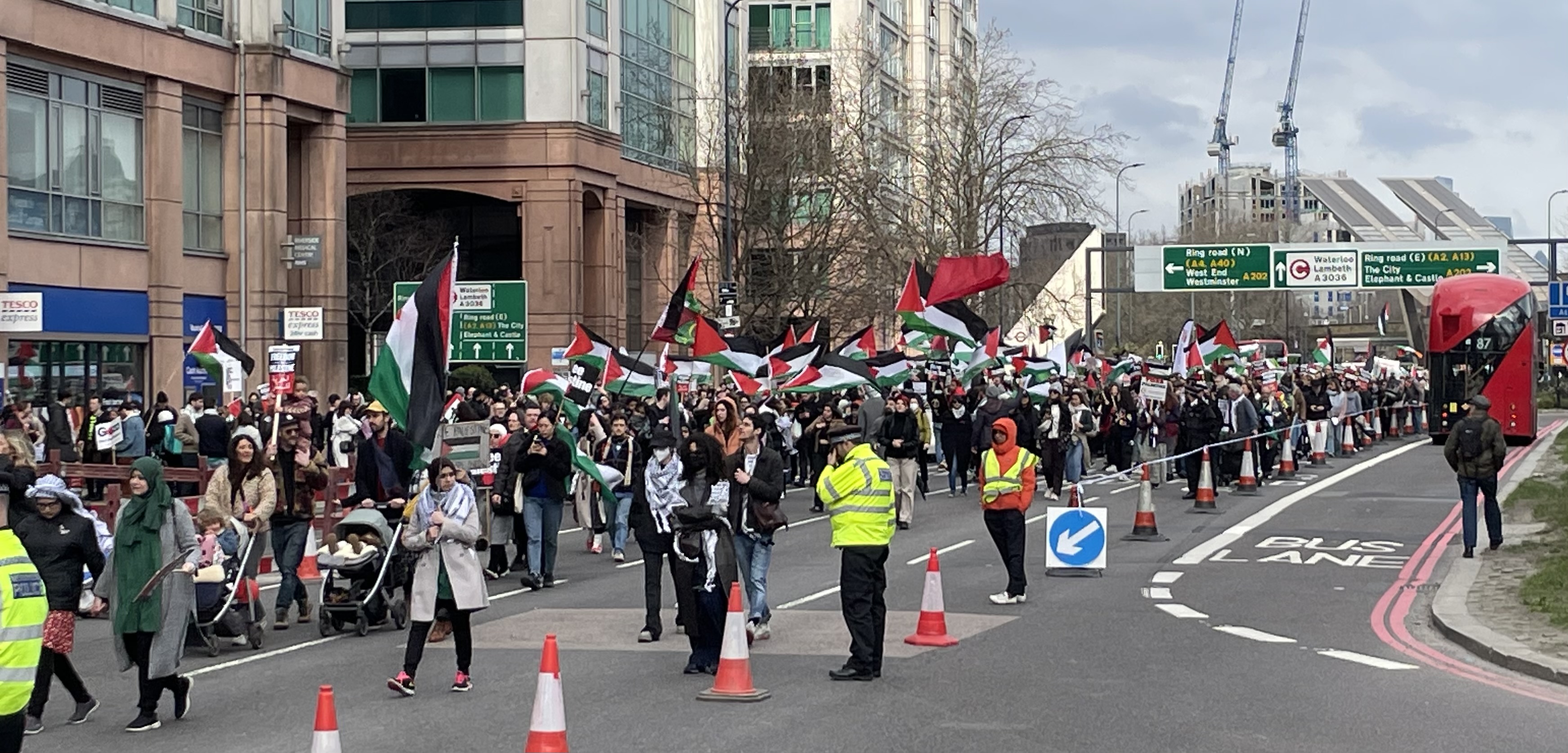
Martin Stanley

